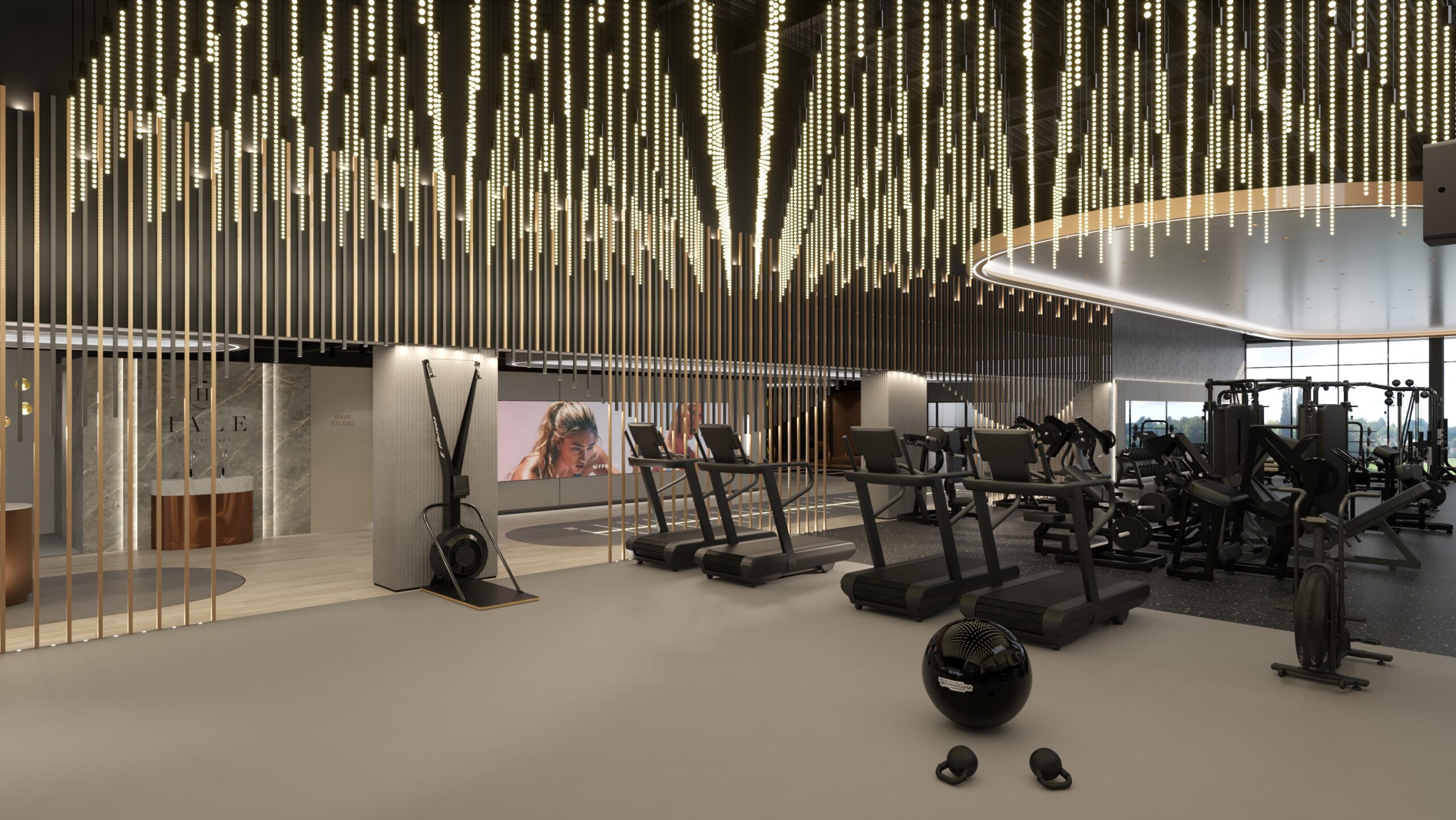
In today’s fast-paced and demanding corporate world, the need for employee wellbeing and better work-life balance has become increasingly recognised. After all, in a 2023 Deloitte study, 77% of respondents said they had experienced employee burnout at their current job, with more than half citing more than one occurrence.
Companies are realising that a healthy and engaged workforce directly impacts productivity, job satisfaction, employee performance and overall success. Here at zynk Design, we understand the crucial role design plays in promoting corporate wellness, having helped countless corporates implement gym, spa and wellbeing spaces.
In this blog, we will delve into why corporate wellness is important and explore effective ways to implement it through thoughtful and inspiring design.
The Need for Corporate Wellness
- Enhancing Employee Health: A healthy workforce is the backbone of any successful organisation. By prioritising corporate wellness, companies can help reduce absenteeism, boost employee morale, and improve overall physical and mental health.
- Increased Productivity: Studies have consistently shown that healthy employees are more productive and focused. Implementing employee wellbeing programmes cultivates a positive work environment that fosters creativity, collaboration, and innovation.
- Attracting and Retaining Top Talent: In today’s competitive job market, prospective employees seek companies that prioritise their long-term wellbeing. Offering comprehensive corporate wellness programmes not only helps attract talent but also retains it, resulting in reduced turnover rates and significant cost savings.
Take a look at our blog “How a corporate wellness centre can improve employee wellbeing” for more employee health statistics.
5 Ways to Implement Corporate Health and Wellbeing Through Design
By incorporating thoughtful design strategies, companies can create environments that positively affect employees both mentally and physically.
Thoughtful Space Planning for Enhanced Movement and Collaboration
An effective corporate wellness program begins with strategically designed spaces that promote movement, relaxation, and social interaction. Consider incorporating open layouts, flexible workstations, and dedicated zones for exercise, mindfulness, and recreation.
This also includes fostering a sense of openness and flexibility by opting for open floor plans that encourage employee engagement and collaboration. These spaces could include lounges, meeting pods, or breakout areas with comfortable seating, whiteboards, and interactive technologies to encourage brainstorming and idea sharing.
Health and Fitness Facilities
Designing a state-of-the-art fitness centre within the corporate premises encourages employees to prioritise physical activity, which is a great way to help them reduce stress. For a corporate gym, it’s important to incorporate high-quality equipment, natural lighting, and inspirational decor to create an inviting atmosphere that motivates individuals to engage in regular exercise. You’ll also want to ensure a diverse range of equipment, including cardio machines, strength training equipment, and functional training tools.
Your wellness facility can also incorporate spa-inspired elements such as steam rooms, saunas, or relaxation lounges to create a calming environment where employees can unwind and rejuvenate after working out. And if feasible, you may even want to consider offering additional wellness services such as massage therapy, physical therapy, or nutrition consultations.
For inspiration, take a look at some of the Health and Fitness Facilities we have designed.
Mindfulness and Relaxation Zones
Mental health is a priority for burned-out employees, and there’s no better way to support them than through designated areas for mindfulness and relaxation, such as yoga studios, mindfulness rooms or meditation pods. These spaces allow employees to unwind, foster mental clarity, reduce stress and improve focus.
From a design perspective, using calming colours, comfortable seating options like lounge chairs or bean bags and soft lighting creates a serene and peaceful atmosphere. You could also consider integrating elements like indoor water features, natural materials, or ambient music to enhance the sense of tranquillity. Here are some examples of luxurious wellness and relaxation spaces we have designed for our clients.
Biophilic Design and Outdoor Spaces
Connecting employees with nature is a proven way to enhance wellbeing and improve productivity. For indoor spaces, you can easily integrate biophilic elements through plants, green walls, and an abundance of natural light to create a sense of tranquillity and improve air quality. Here’s more information on the benefits of biophilic design in health and fitness.
And if you have access to an area outside, offering outdoor spaces like rooftop gardens, courtyards, or terraces is another excellent way to provide opportunities for relaxation and fresh air. This can also help improve cognitive function as numerous studies have shown that exposure to natural elements can enhance concentration, memory, and problem-solving abilities. Employees who have access to outdoor spaces can take short breaks or work in these areas, rejuvenating their cognitive abilities and improving overall productivity.
Technology Integration to Encourage Participation
Another great way to encourage better employee health is to incorporate technological solutions, such as fitness tracking apps, wellness platforms, or smart office systems, to empower employees to track their progress and access valuable resources.
For example, by implementing wellness apps and wearable fitness devices, you can provide them with a convenient and accessible way to track their wellness goals and participate in wellness challenges. These apps can offer features like personalised fitness plans, nutrition tracking, mindfulness exercises, and social communities where employees can interact and support each other’s wellness journeys.
What’s more, technology-driven gamification elements, such as challenges, competitions, or point systems that reward employees for participation and milestones, make wellness programs more engaging and motivate employees to actively take part in the wellness programmes that you offer.
Wellbeing at Work: Corporate Wellness Design Trends for Employers
The last few years have seen a shift in how employees think about their workplace and have made people reconsider what they want out of work. Mental health is a priority, as is overall wellbeing. Prioritising corporate wellness is therefore no longer an option but a necessity for forward-thinking organisations.
Here at zynk Design, we understand how crucial this is and have a track record of creating corporate wellness experiences that employees love. This, in turn, helps reduce employee turnover and increase company-wide productivity, all while strengthening a company’s bottom line and overall brand image.
If you’d like to learn more about employee wellness facilities, you can download our free guide from 2022 on this topic. It includes important information about:
- Why workplace wellbeing is important for employers
- Trends for wellbeing at work
- How much space is needed for a corporate wellness facility
- What working with professional wellness designers looks like
- And much more



